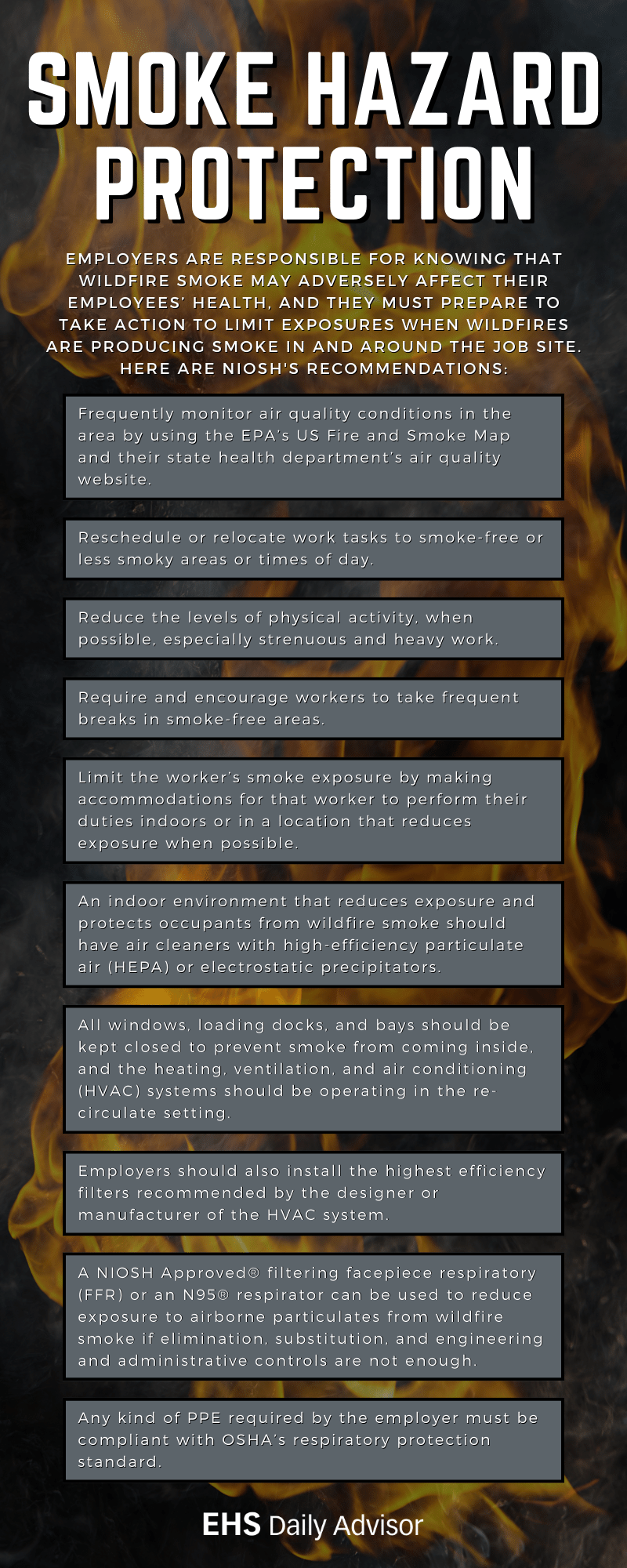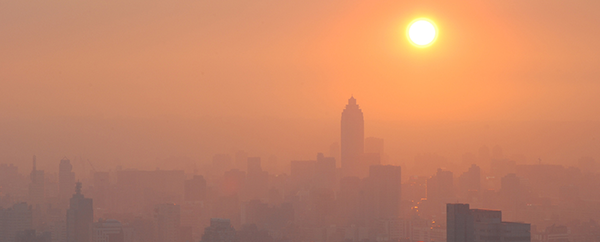- Employers should implement strategies for protecting outdoor workers from wildfire smoke exposure, such as monitoring air quality, providing frequent breaks and rescheduling or relocating work.
- Wildfire smoke poses major health risks to outdoor workers, including eye irritation, chronic respiratory conditions and death.
- When possible, arranging for work to be completed indoors and taking measures to improve the building’s air quality can effectively protect employees from smoke exposure.
As wildfires grow increasingly common and intense, the smoke they produce poses a major health hazard to outdoor workers. Employees who can’t easily perform their work indoors when air quality is poor, such as construction and agricultural workers, are at an increased risk of adverse health effects. Smoke-related health issues can range from eye irritation to chronic respiratory conditions and death. As such, during hazardous environmental conditions, employers have a unique responsibility to prioritize health and safety by protecting outdoor workers from wildfire smoke exposure.
Related: 3 ways to help your client beat workplace heat illness
Smoke safety strategies
Although it’s impossible to entirely eliminate the threat of wildfire smoke to outdoor workers, employers can adopt certain safety measures to help ensure their employees’ safety. The National Institute for Occupational Safety and Health has developed the following safety strategies to help protect outdoor workers from wildfire smoke exposure:
- Monitor air quality: Use resources like the Environmental Protection Agency’s Fire and Smoke Map or the United States Department of State’s ZephAir mobile app to track air quality levels and determine when it’s unsafe for outdoor work.
- Reschedule or relocate work: Reschedule outdoor tasks or relocate work to areas with better air quality, if possible.
- Reduce physical activity: Decrease the intensity of outdoor work to lower respiratory rates and reduce smoke inhalation.
- Require regular breaks: Provide outdoor workers with regular breaks indoors or another clean air shelter.
- Provide personal protective equipment: Supply workers with proper respirators like N95 masks when air quality is hazardous.
Related: Wildfire Preparedness
The most effective way to protect employees from smoke exposure, however, is to arrange for their work to be completed indoors whenever possible. Indoor work environments can be made safer from smoke by enacting the following NIOSH-approved measures:
- Keep windows, doors and other building openings closed to reduce smoke exposure indoors.
- Install air purifiers with HEPA filters or electrostatic precipitators.
- Ensure the building’s HVAC system has the highest efficiency filter recommended by the manufacturer installed and run the system in the recirculate setting.
Protecting workers is a top priority
The threat of wildfires is here to stay, so protecting outdoor workers from wildfire smoke exposure and preparing to implement smoke safety strategies in the workplace should be a top concern for employers in high-risk fire areas. Following the measures listed above is a great place to start.
Below is an EHS Daily Advisor infographic, used with permission, listing all NIOSH-approved smoke safety strategies. We encourage you to review it, share it with your clients and help keep outdoor workers safe.

References:
Outdoor Workers Exposed to Wildfire Smoke | NIOSH | CDC
Back to Basics: Particulate Matter and Smoke Exposure – EHS Daily Advisor (blr.com)
Wildfire smoke & air quality: Keeping workers’ safe (propertycasualty360.com)

